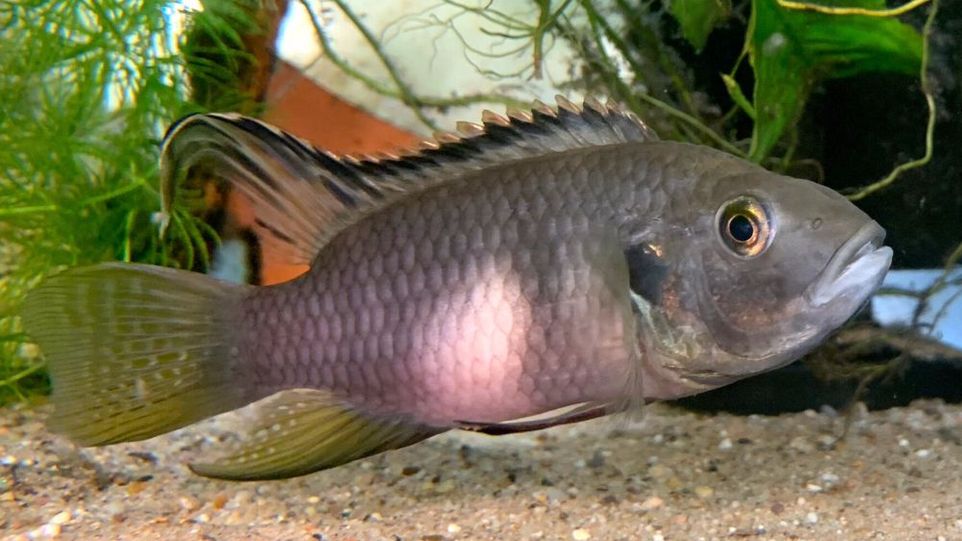
Immaculate Conception

A cichlid lives in an aquarium - alone. Suddenly it has offspring. How is that possible?
02/22/2024 · News · Leibniz-Institut zur Analyse des Biodiversitätswandels · Lebenswissenschaften · Forschungsergebnis
Childbearing does not necessarily have to be a team effort. A team including LIB researcher Astrid Böhne found that cichlids are capable of self-fertilization, allowing them to produce offspring on their own. However, how did researchers even come up with the idea to study the reproductive method of cichlids more closely?
‘We came up with the idea because my colleague Dr. Timo Thünken from the University of Bonn brought cichlids of the genus Benitochromis from Cameroon, which become very aggressive in captivity and, for this reason, can only be kept solitary in an aquarium. Suddenly, one of these solitary fish reproduced. Initially, we thought it might have happened due to external influences, so we paid close attention to ensure that there were no impurities during activities like water changes – and yet it happened again,’ explains Dr Astrid Böhne, Head of the Comparative Genomics section at LIB, who was consulted by her colleague because she had already extensively dealt with the scientific basics of fish sex development.
When the researchers examined the entire genome of this fish and its offspring, they noticed that the offspring showed a loss of genetic diversity. They often had only one allele – different variants of a gene at a specific location on a chromosome – whereas ordinary individuals have two alleles. According to the researchers, there are usually two possibilities for this: either due to inbreeding or parthenogenesis – asexual reproduction. To find out more, the researchers used a computer program to simulate the genes of a sibling and then mimicked what the genetics of the offspring of both fish would look like. Through this, they were able to determine that only the parent fish is closely related to the examined cichlid and could thus exclude the theory of inbreeding. The researchers also could not detect foreign DNA. The only possible theory: the fish could reproduce without a mate. A technique we already know from other vertebrate species such as snakes or geckos but not yet in cichlids.
The problem with reproduction without a mate: During the development of offspring, cells divide, and at the same time, the chromosome content of the cells is halved – also called meiosis. In sexual reproduction, these cells are replenished with the genetic information of the parents – in parthenogenesis, this part is lost. However, the examined fish did not show a loss of chromosomes at the same locations in their genetic code. As a result, the researchers conclude that the fish self-fertilize to produce offspring. In classical examples of parthenogenesis, which is also observed in vertebrates, only the egg cell divides without being fertilized at all.
This self-fertilization has so far only been demonstrated in another vertebrate, the mangrove killifish Rivulus marmoratus. These fish live in a highly structured habitat surrounded by mangroves and can reproduce both by themselves and with a conspecific. The examined cichlids also live in a highly structured environment, so self-fertilization could also occur in the wild – not just in aquariums. ‘Until now, it was not known that cichlids could change their sex at all. Before us, no one had made a whole-genome resolution of the fish and was able to trace reproduction in this way. That is why many colleagues are now re-examining their research objects and reproduction mechanics. Apparently, there is nothing that does not exist, and reproduction is not as trivial as we thought for a very long time,’ summarizes Astrid Böhne.
Further information and contact
Presse release - Leibniz Institute for the Analysis of Biodiversity Change (LIB)